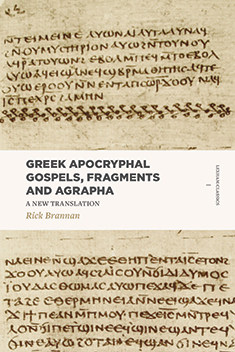Are you familiar with the movie The Matrix? I’m not so worried about the plot of the movie here; instead, I’m wondering about a particular effect created in the film: time essentially stopped or slowed incredibly, but the main character (“Neo,” played by Keanu Reeves) appeared conscious in the midst of the slowdown. Do you think this was a new technique? I remember watching it, thinking that it wasn’t just cool, it was innovative.
What if I told you about a noncanonical story of Jesus’ mother, Mary, circulated among early Christians—one that used a similar technique? And what if I told you it happened right at the point when Jesus was born? Well, it did, and that story is also known as the Protevangelium (or “Proto-Gospel”) of James (though in all likelihood, James, Jesus’ brother, had nothing to do with it). It tells a story of Mary’s parents, her birth, how she was raised, how Joseph came into the picture, and—of course—the birth of Jesus.
The Protevangelium of James is found in a group of writings usually called “apocryphal gospels” or “New Testament apocrypha” or sometimes even simply “noncanonical gospels.” I’ve been working on a version of the apocryphal gospel material available in Greek. We recently expanded it to a two-volume collection. One volume includes “Texts and Transcriptions”; this is the Greek material with morphological analysis. The second volume includes “Introductions and Translations”—newly written introductions to each document, fragment, or excerpt, as well as newly compiled bibliographies, and translations of all the material. It’s pretty cool (at least I think so); check it out if you’re interested. Most of the work is done, and we hope to release it early in 2013.
Anyway, back to Joseph in the Matrix. Here’s the setting: Joseph and Mary are traveling to Bethlehem for the census. Mary is at pretty much full-term pregnancy. On the way, though, Mary says to Joseph, “Take me down from the donkey, for that which is within me presses hard to come out.” (Prot. James 17.3) Now, any father-to-be can identify with Joseph here. His task is to find a place for Mary, and quick. So, according to this version of the story, Joseph finds a cave, drops Mary off there, and immediately goes to find a Hebrew midwife to assist with the birth.
And here is where the shift happens. The story was in the third person, but in Prot. James 18.2, it shifts to the first person singular, with Joseph as speaker.
“Now I, Joseph, was walking, yet I did not walk. And I looked up to the air and saw that the air was astonished. And I looked up unto the vault of heaven and saw it standing still, and the birds of the sky at rest. And I looked upon the earth and saw a dish laid out, and workmen lying by it, and their hands were in the dish. And they that were chewing did not chew, and they that were lifting food did not lift it, and they that put it to their mouth had not put it there. And behold, there were sheep being driven, and they did not go forward but stood still; and the shepherd lifted his hand to strike them with his staff, yet his hand remained up. And I looked upon the stream of the river and saw the mouths of the goats upon the water, yet they did not drink. And suddenly all things were restored to their course.”
Joseph notes, “I was walking, yet I did not walk.” Other people and objects are described in a similar state of being, but not moving; essentially stuck: “there were sheep being driven, and they did not go forward but stood still; and the shepherd lifted his hand to strike them with his staff, yet his hand remained up.” The picture is of a moment, frozen in time. Joseph is caught in that moment, similarly frozen, but consciously aware of it. And then, as suddenly as the moment comes, it leaves: “And suddenly all things were restored to their course.”
After this experience, Joseph conveniently and immediately locates a Hebrew midwife, and returns to the cave with her. Joseph and the midwife then find out that Jesus had already been born.
So why even mention this story at Christmastime? Not because it is canonical (it isn’t) or because it accurately supplements the story of Jesus’ birth (it probably doesn’t). But this is another way that some early Christians—particularly those who were struggling with the concept of the virgin birth—told that story. They told it in a way that allowed them to believe the virgin birth actually happened.
Not only that, it’s a good story, though I do like Luke’s version better.
Pick up your copy of Greek Apocryphal Gospels, Fragments, and Agrapha today.
* * *





